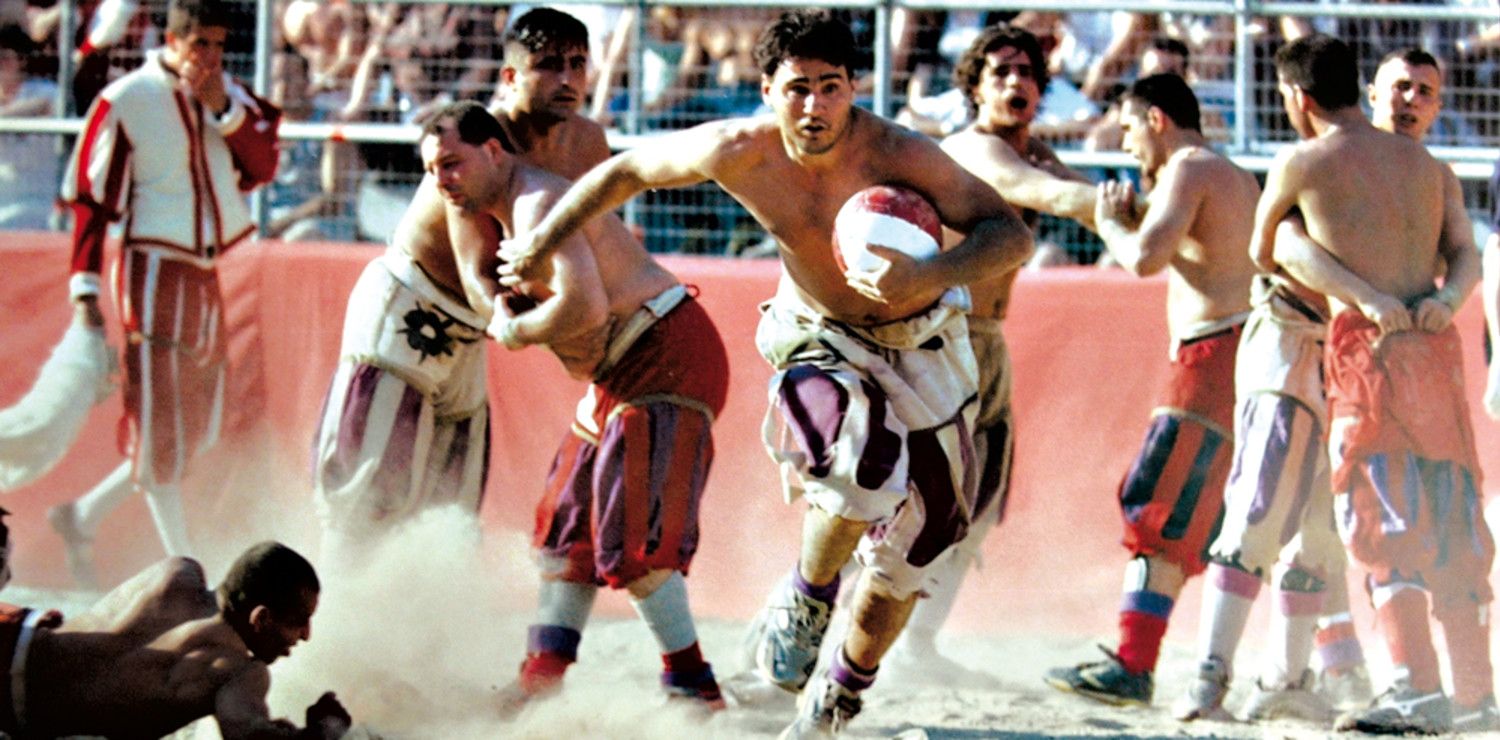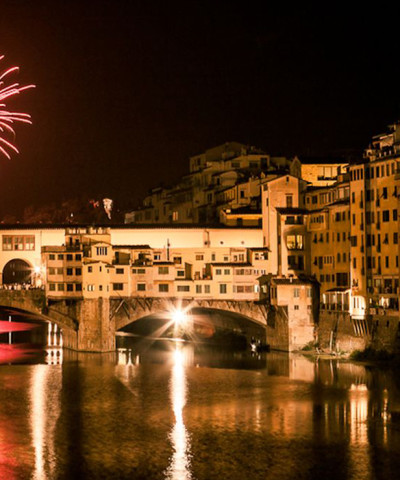Everything you need to know about Calcio Storico Fiorentino
Telling the Historical Football is telling Florence
Talking about Calcio Storico means talking about Florence, its existence in time and out of time, its history and events, moving from one to the other with the pride of those who know that they have a very special role in the events of our civilization. So when we talk about this - defining it as a “game” is limiting - with its distant origins from the Greeks and Romans who arrived on the banks of the Arno, and that continues to live on and inspire enthusiasm, it seems quite natural.
From a game for fearless young aristocrats, so fashionable it was also played on the frozen Arno River (1490), it became a manifesto for freedom. On February 17, 1530, Florence was besieged by one of the most powerful armies of that time, that of Charles V of Habsburg, the emperor on whose lands, it was said, the sun never set. And while the threatening drums of the besiegers beat, the Florentines, contemptuous of danger, staged in Piazza Santa Croce, well in sight of the enemy, a football match to celebrate Carnival, although the city was exhausted by hunger. This became an event that the historical Florentine memory sculpts and sanctifies. From a game into history, for centuries the defining moment of a collective mood that is not only transmitted through stories, but that every Florentine holds within, was replayed.
So, beginning in 1930, the event was revived and each year, not for the Carnival, but for the feast of San Giovanni, the patron saint of the city, a tournament between the four ancient neighbourhoods of Florence is organized, with historical sixteenth-century costumes, designed with refinement, drawing on the iconography of the time. Each one is characterized by a colour: the Bianchi are the Santo Spirito players, Azzurri are from Santa Croce, Rossi from Santa Maria Novella, and the Verdi from San Giovanni.
This tournament, today, is played in three matches in June, two preliminary rounds and a final which coincides with the celebrations of San Giovanni, on the 24th. Matches take place in a field covered with sand. The site is the historic setting of Piazza Santa Croce, although for years, the prestigious Piazza della Signoria was chosen, bearing witness to the civic life of Florence. While the players line up and scrutinize each other, in their quaint costumes, proud of the colours, symbols, and also those puffy old-fashioned bloomers, often a hindrance in the more violent melees, everyone waits anxiously for the ball to be launched and the hostilities to begin. It is fifty minutes of pure adrenaline, exasperated desire for victory, for the affirmation of one’s own colours and proud identity. In the end, as a reward for so much awaited victory, the winning team receives a white Chianina calf. But Calcio Storico is also much more. So every June 24, when Piazza Santa Croce is filled with sand, the costumes are taken out of the closet, and the summer light shines on the old palaces, the magic happens. Florence prepares for its triumph! The city is adorned in colours and atmosphere because along with the Calcio Storico, the thrill of combat, there is also music, flags, and elegance. It all culminates in the historic parade that moves through the downtown streets, brought to life by those characters, protagonists of the events of that heroic moment. But the Florentines are now perfectly at ease playing their ancestors, proudly parading and immersed in their role. It is a military parade, but also a display of social status, power, luxury, elegance, revealing the meticulous care taken with the costumes, the details of a buckle, the choice of a shade of a ribbon or a fringe or the softness of the leather, that very high quality of artisan tradition that still lives in on Florence, that underlies “Made in Italy”. One by one the participants of the procession, or rather these true Florentines, parade proudly in their costumes with specific identities. A colour, a fabric, a shape, a feather, are more revealing than a birth certificate. The atmosphere, elegance and charm of the Calcio Storico Fiorentino inaugurated the 88th edition of Pitti Uomo with the parade (the historic costumes refer to the glorious defense of Florence from the siege of Charles V’s imperial troops), a match, and the publication of the book of portraits Viva Fiorenza, from the photographic lens of Aldo Fallai. The event is sponsored by the Centro di Firenze per la Moda Italiana (Florence Centre for Italian Fashion) chaired by Stefano Ricci.










